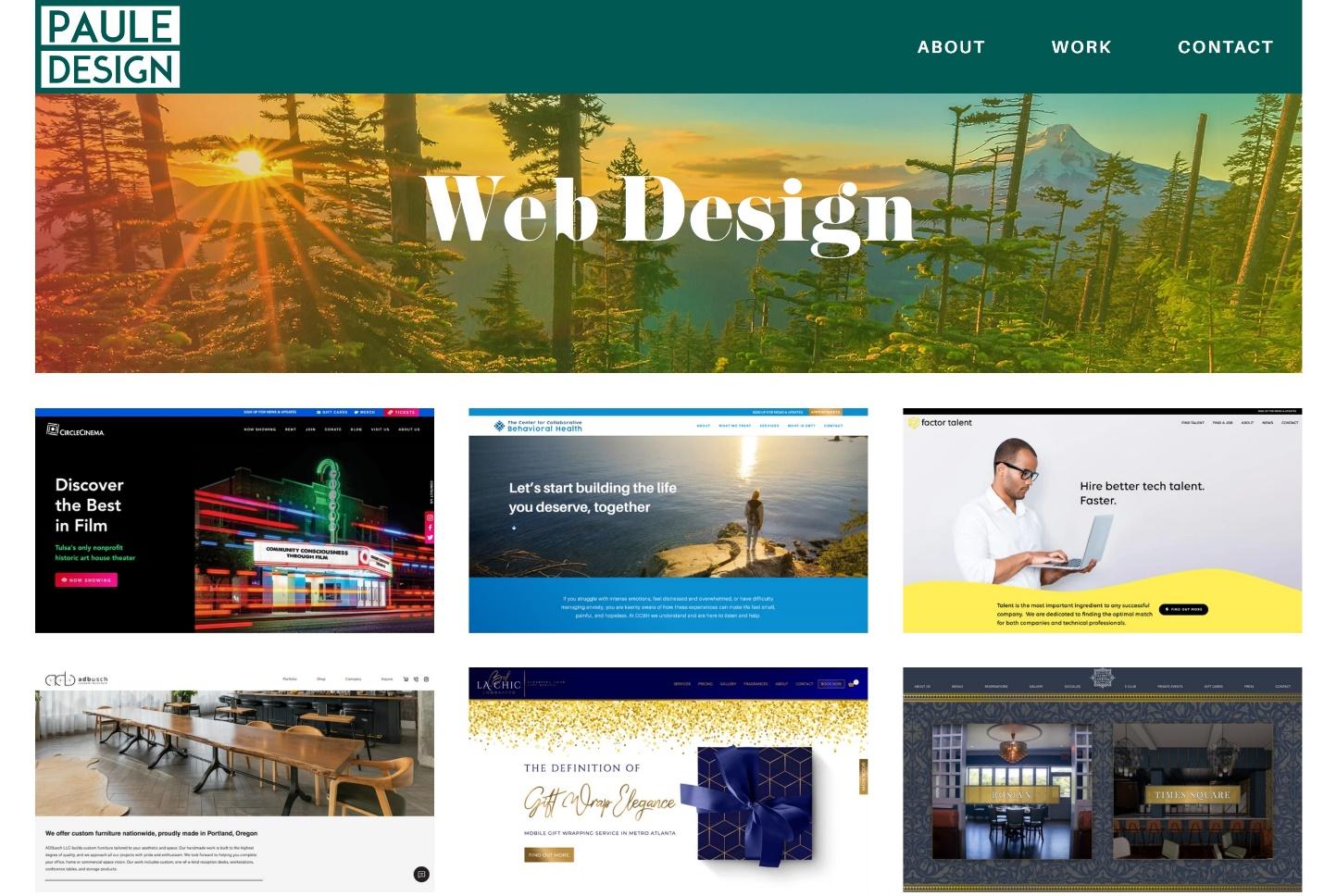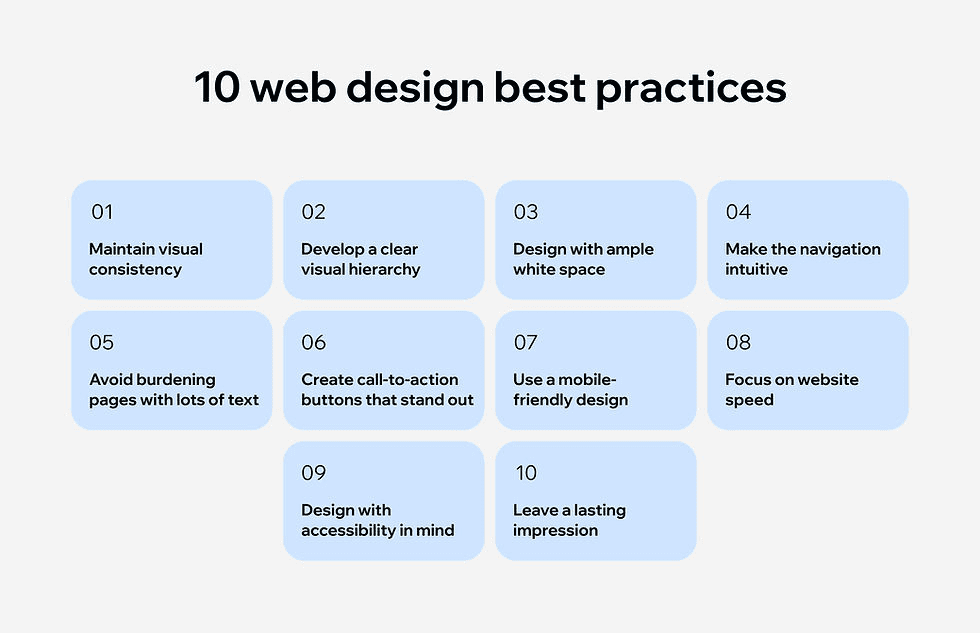In the rapidly evolving world of digital marketing, adopting effective **web design best practices** is essential for any small business aspiring to thrive online. A well-crafted website not only builds credibility but also caters to user experience in web design—guiding visitors effortlessly through its features. As we delve deeper, we will uncover strategies that enhance mobile responsiveness and optimize for SEO for small business websites, ensuring that every click leads toward engagement and conversion. Quality content, accessible web design, and simplified navigation are pillars that support your digital success. Join us as we navigate through these key practices, each designed to elevate your online presence in a fast-paced market.
In the digital landscape, establishing a strong online presence is pivotal for small enterprises aiming to resonate with their audience. A focus on top-notch website creation principles can markedly enhance how users interact with your content and convert visitors into loyal clients. Crafting an intuitive interface, ensuring mobile compatibility, and employing meticulous search engine optimization techniques are just some of the elements that contribute to impressive small business website design. Embracing inclusive design strategies and fostering exceptional user experience in web design can not only amplify visibility but also enable brands to connect meaningfully with a broader audience. As we explore these foundational elements of effective online strategy, we unveil opportunities that can redefine how small businesses engage in the bustling digital marketplace.

User-Centric Design Principles
User experience (UX) design lies at the heart of crafting a successful website, especially for small businesses eager to make their mark online. A crucial principle to employ is simplified navigation. Think of your website as a roadmap; if users cannot easily find their way, they will venture elsewhere. Clear layouts with dropdown menus allow users to navigate seamlessly, significantly minimizing frustration and increasing engagement. With each click, a sense of ease fosters trust and leads to higher conversion rates.
Transitioning into the realm of mobile responsiveness, it’s imperative today that websites are not just pretty vistas but fluid landscapes that flow effortlessly across devices. Statistically, over fifty percent of web traffic now springs from mobile users, making this aspect non-negotiable. Google has placed a premium on mobile-friendly sites, and thus, your website must not only look good on desktops but also adapt and shine brightly on tablets and smartphones. Employing tools, like Google’s Mobile-Friendly Test, serves as your compass, ensuring your site navigates all devices with grace.
Fast loading times are the final brushstroke in this masterpiece of design. Users live in a world of instant gratification; if a webpage lingers more than three seconds, their interest wanes. Small businesses can optimize their sites by compressing images, trimming unnecessary scripts, and enabling browser caching. This attention to detail not only enhances user experience but also lowers bounce rates, inviting users to stay and explore. Tools like GTmetrix or Google PageSpeed Insights are your allies in this quest, providing insights and the power to improve performance. Thus, the foundation of engaging design rests on user needs—simplicity, responsiveness, and speed.
Crafting Brand Consistency and Quality Content
In the narrative of a small business, branding serves as the signature, an identifier in the crowded marketplace. Therefore, establishing a consistent branding strategy across all touchpoints is meticulous yet rewarding. Small businesses should embrace uniform colors, fonts, and logos that dance together harmoniously. Creating a brand style guide can act as a beacon, illuminating how businesses can consistently project their unique identity, fostering familiarity and trust among their audience.
Yet, even a symphony of colors falls flat without quality content. Quality reigns supreme as the backbone of your online presence. By curating engaging and informative content tailored to the specific needs of your audience, you not only nurture your SEO but also extend the duration of visits. Regular blog updates, elucidative FAQs, and meticulously crafted service descriptions form a tapestry of quality, weaving connections and keeping users invested in your story.
The goal is not merely to fill pages with text but to attract readers like moths to a flame. Paint vibrant narratives, share valuable insights, and let every piece of content echo the heart of your business, inviting users to trust and engage. Regularly refreshed content signals to search engines that your site is alive and flourishing, a vital strategy for emerging small businesses in their quest for visibility.
Implementing SEO Success Strategies
When it comes to exiting the shadows of obscurity, a solid grasp of SEO best practices is your lantern, illuminating the path to success. On-page SEO strategy deserves attention; incorporating relevant keywords throughout your content and metadata elevates search engine rankings substantially. However, for small enterprises, honing in on local SEO endeavors is particularly crucial. Targeting geographical keywords, optimizing Google My Business listings, and crafting content that emphasizes local relevance can draw in the customers most likely to walk through your door—and into a lifelong relationship with your brand.
Additionally, backlinking emerges as a potent strategy. By aligning with reputable websites, you can bolster your credibility and visibility online, crafting a positive reputation that spreads through collaboration and connection. Seek partnerships with local influencers or businesses—guest blogging can weave mutual benefits, enhancing authority and expanding reach, as each link here serves as a thread of trust in the vast web.
Regular analysis and adaptation must accompany these strategies. Using tools like Google Analytics allows for a continuous reevaluation of user behavior. Understanding which tactics resonate with your audience is essential. What pages attract the most clicks? What content keeps users engaged? By monitoring key metrics, businesses can refine their approach and pivot strategies that align with evolving user behaviors, ultimately shaping a website that evolves just as its visitors do.

Final Thoughts on Web Design for Small Businesses
As we wrap up this exploration of web design best practices tailored for small businesses, it’s evident that creating a compelling online presence requires thoughtful execution. By prioritizing user experience with clear navigation, mobile responsiveness, and swift loading times, small businesses can forge meaningful connections with their audience. Moreover, leveraging a consistent branding strategy coupled with high-quality content ensures that visitors find value and trustworthiness in what they engage with. In the vast landscape of digital marketing, these elements act as the sturdy foundation upon which great user experiences are built.
Additionally, don’t overlook the significance of SEO practices, both on-page and through strategic backlinking, to help your business shine brightly within search results. Emphasizing accessibility ensures your website welcomes all visitors, making it an inclusive space for everyone. Regular testing and keen analysis of user behavior drive continuous improvement, allowing businesses to adapt swiftly to the needs of their target audience. In essence, a commitment to these best practices not only enhances user engagement but also positions small businesses competitively in an ever-evolving marketplace.















